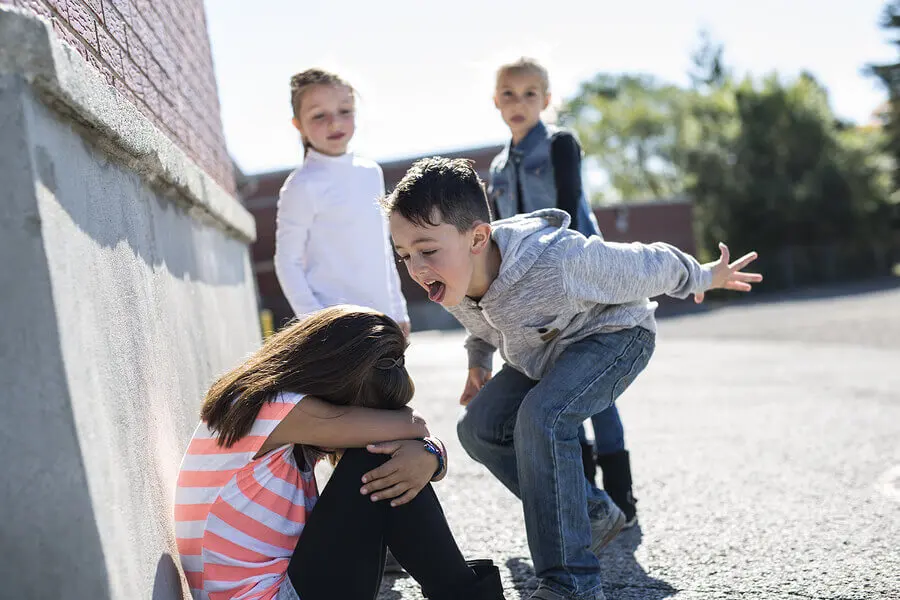5 Tips to Protect Yourself from Online Bullying

Online bullying is a reality to which we’re all exposed and from which we must protect ourselves. However, children and adolescents are particularly vulnerable, not only because of their extensive use of technology but also because of the lack of knowledge and impulsiveness typical of their age.
If the consequences are not foreseen and prevented, they can be very harmful. This is why its advisable to teach them to protect themselves in the virtual world.
Online bullying is becoming more and more frequent, as children start using the Internet and social networks at an early age. It’s estimated that more than 20% of bullying cases occur through digital channels.
And since it’s neither possible nor desirable to completely remove young people from technology, we face the challenge of showing them how to stay safe. Here are some guidelines.
What is online bullying?
Online bullying, also called cyberbullying, is very similar to what happens in the real world in terms of intentions or effects. However, in this case, social networks, online messaging systems, or web pages are the environments in which it takes place.
When we talk about “bullying,” we’re referring to a series of repetitive behaviors that seek to harm, or undermine the integrity or dignity of the victim. Thus, it isn’t a punctual comment, but a dynamic that occurs repeatedly and generates a serious alteration in the daily life of the person.
This harassment can take different forms:
- Insults, derogatory comments, or threatening messages
- Spreading hoaxes or rumors about the victim and defaming him/her
- Impersonation or hacking of a personal account
- Sharing personal or sensitive content about the other person
- Encouraging and encouraging the victim to be excluded or assaulted by others
We think you may also enjoy reading this article: Bullying at School: Is Your Child a Victim and You Don’t Know It?
In addition to this, it’s worth mentioning that online bullying has some particularities that differentiate it from traditional bullying:
- There are no barriers of space or time: For example, bullying that occurs in the classroom stops when the child leaves school and can feel safe at home. In this case, on the other hand, persecution can occur at any time and place, since the Internet and social networks are always with us.
- The Internet provides certain anonymity and a sense of impunity that can make the bullying worse. In addition, by not having the victim in front of us, empathy also decreases.
- In the digital environment, it’s very easy for harassment to have a greater reach, since information easily becomes viral. This, undoubtedly, means that the repercussions can be greater.

How to protect yourself from online harassment
Suffering from online bullying can seriously affect the emotional well-being and mental health of children. It’s common that it generates high doses of anxiety and distress, affecting self-esteem and the ability to relate to others. It can even trigger depression and have long-term repercussions. Thus, it’s important to teach children and young people how to protect themselves from online bullying with different measures.
1. Communication and information
This is a basic but essential key: we must speak to our children truthfully and explain what online bullying is, how it occurs, and what consequences it has. It’s important not to treat it as a distant issue, but as something to which we’re all exposed and which must be prevented.
The aim of this communication is that children can identify what acts constitute harassment, both if they suffer them and if they observe them when another is the victim. It’s crucial that they become aware of the importance of preventing them, that they can detect them when they occur and know how to ask for help.
In this regard, children should be clear that their parents are a safe place to turn to, that no matter how naive or irresponsible they may have been, they will not be judged or punished, but supported.
Otherwise, they may tend to hide what’s happening.
2. Parental supervision and control
Minors are increasingly accessing technology at younger ages, without being fully prepared for the responsibility that this entails. It’s therefore essential for parents to supervise by using parental control systems and being aware of their children’s Internet activity.
This doesn’t mean that their privacy should be violated or that their conversations should be spied on. However, they need to know that their parents may ask for access to their profiles or messages at some point.
Like this article? You may also like to read: The KiVa Method for Bullying and Harassment at School
3. Privacy protection
A fundamental aspect is to teach children and young people to protect their privacy online. This involves keeping their profiles private and not accepting strangers as friends, avoiding posting personal data, and not sharing sensitive content with anyone. They need to be aware that once they post content on the Internet, they lose control over it. Thus, even if they’re communicating with their partner or friends, they should avoid sharing images or information that compromises them in any way.

4. Healthy distrust
In childhood and adolescence, we’re very vulnerable to pranks, rumors, or scams, precisely designed to make us fall for them and take advantage of our naivety. This is why it’s important to warn against false profiles, fraudulent contests, or tempting propositions coming from strangers (such as the crypto cults).
5. Take measures against online harassment
Finally, if prevention hasn’t been enough and the child is already a victim of online harassment, it’s essential to take appropriate measures. These will depend on the specific case, from notifying the school of what has happened to bringing it to the attention of the authorities if the bullying is serious and repeated.
Children must know the importance of not deleting evidence and go to their parents or trusted adults as soon as possible.
Support is essential to overcome online bullying
In addition to the above, the best way to protect against online bullying is to have help. Children need the listening, support, and guidance of their parents to get through this tough situation and take appropriate action.
Just having an adult who believes and supports the child can mitigate the harmful psychological effects of online bullying. So don’t ignore any signs that suggest your child is going through this.
All cited sources were thoroughly reviewed by our team to ensure their quality, reliability, currency, and validity. The bibliography of this article was considered reliable and of academic or scientific accuracy.
- Barrado, B. B. (2017). Teléfono ANAR: la herramienta de prevención, detección e intervención frente al acoso escolar y el ciberbullying en España. Revista de Estudios de Juventud, (115), 239-258.
- Fundación ANAR. (2018). III Estudio sobre acoso y ciberbullying según los afectados. https://www.observatoriodelainfancia.es/ficherosoia/documentos/5621_d_III-Estudio-sobre-acoso-escolar-y-ciberbullying-seg%C3%BAn-los-afectados.pdf
This text is provided for informational purposes only and does not replace consultation with a professional. If in doubt, consult your specialist.









